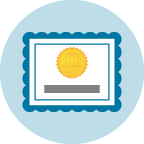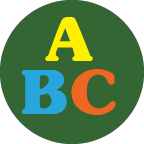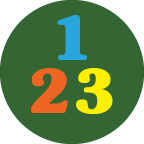 Art Activities
Art Activities
These activities will bring out the artist in your child.
-

- Activity Title
- ?
Topic or Theme
Identifying letters in a child's name and listen to ABC (The Alphabet Song)

-


First Name
Brief description of activity or summary of tasks and/or materials used.
-





-
- Art
- 19
Making Circle Clouds
Developing finger dexterity and estimation skills
-
Making Circle Clouds
Developing finger dexterity and estimation skills
-



-
- Art
- 19
Making a Stop Sign
Measuring and cutting to make octagon
-
Making a Stop Sign
Measuring and cutting to make octagon
-



-
- Art
- 18
Potato Printing
Making potato print wrapping paper to reinforce shapes
-
Potato Printing
Making potato print wrapping paper to reinforce shapes
-



-
- Art
- 19
Making Faces
Facial features and shapes activity
-
Making Faces
Facial features and shapes activity
-




-
- Art
- 18
Aluminum Foil Molding
Creating aluminum foil shapes and objects
-
Aluminum Foil Molding
Creating aluminum foil shapes and objects
-



-
- Art
- 18
Hand Tracing
Listen to "I Believe in You", practice tracing and counting fingers
-
Hand Tracing
Listen to "I Believe in You", practice tracing and counting fingers
-



-
- Art
- 19
Friendship Pillowcase
Decorating a pillowcase with markers and handprints, Learning a Poem
-
Friendship Pillowcase
Decorating a pillowcase with markers and handprints, Learning a Poem
-



-
- Name Activity
- 01
First Name
Listen to song "What's Your Name" and finding sock letters
-
First Name
Listen to song "What's Your Name" and finding sock letters
-




-
- Art
- 18
Painting
Listening to song "Race: The Final Starlight Express" and painting
-
Painting
Listening to song "Race: The Final Starlight Express" and painting
-

-
- Art
- 18
Make a Card
Child created greeting card
-
Make a Card
Child created greeting card
-



-
- Art
- 19
Making Touch Cards
Sense of touch and making a matching game
-
Making Touch Cards
Sense of touch and making a matching game
-



-
- Art
- 19
Cutting and Coloring
Teaching shapes with drawing skills and finger dexterity practice
-
Cutting and Coloring
Teaching shapes with drawing skills and finger dexterity practice
-



-
- Art
- 19
Cutting & Pasting
Listen to "She'll Be Comin' Round the Mountain" and design a container with letters - G & Y
-
Cutting & Pasting
Listen to "She'll Be Comin' Round the Mountain" and design a container with letters - G & Y
-



-
- Art
- 18
Edible Bracelet
Teaching color patterns with cereal and finger dexterity
-
Edible Bracelet
Teaching color patterns with cereal and finger dexterity
-



-
- Art
- 18
Paint Smock
Making a personalized art smock
-
Paint Smock
Making a personalized art smock
-


Activity Skills Focus
1 Social / Emotional Skills
Skills that develop children’s ability to understand the emotions of others and help children recognize and use appropriate social behaviors (for example, making friends). In the Department of Education report “Guiding Principles A Resource Guide for Improving School Climate of January 2014 it states “strategies such as social-emotional learning programs that address non-cognitive skills, including problem-solving, responsibility and resiliency, can also help students develop the skills needed to fully engage and thrive in the learning environment.”
2 Language Skills
Skills that help children understand and communicate during early childhood. The alphabetic principle (knowing letter names and sound-letter matches) aids in language development and is enriched by verbal interactions with other children and adults (reading aloud and engaging in conversation).
View all Language Skills Activities
3 Math / Science Skills
Math and Science skills help children with problem-solving and reasoning. Exploring numbers, patterns, and measurements by using math manipulatives (beads, counters, pennies) are all ways children develop their math skills. Asking questions about their surroundings, learning a science vocabulary (predict, observe), and having hands-on experiences with their environment can help develop their science skills.
4 Motor Skills
Motor skills are actions that involve the movement of muscles in the body. They are divided into three groups:
1. gross motor skills, which are the larger movements of arms, legs, feet, or the entire body (crawling, running, and jumping)
2. fine motor skills, which are smaller actions, such as grasping an object between the thumb and a finger (pencils or scissors)
3. sensorimotor skills which use the five senses to guide physical motions as in eye-hand coordination.
View all Motor Skills Activities
5 Problem Solving Skills
Skills that help with the construction of thought processes, including memory, problem-solving, and decision-making.
